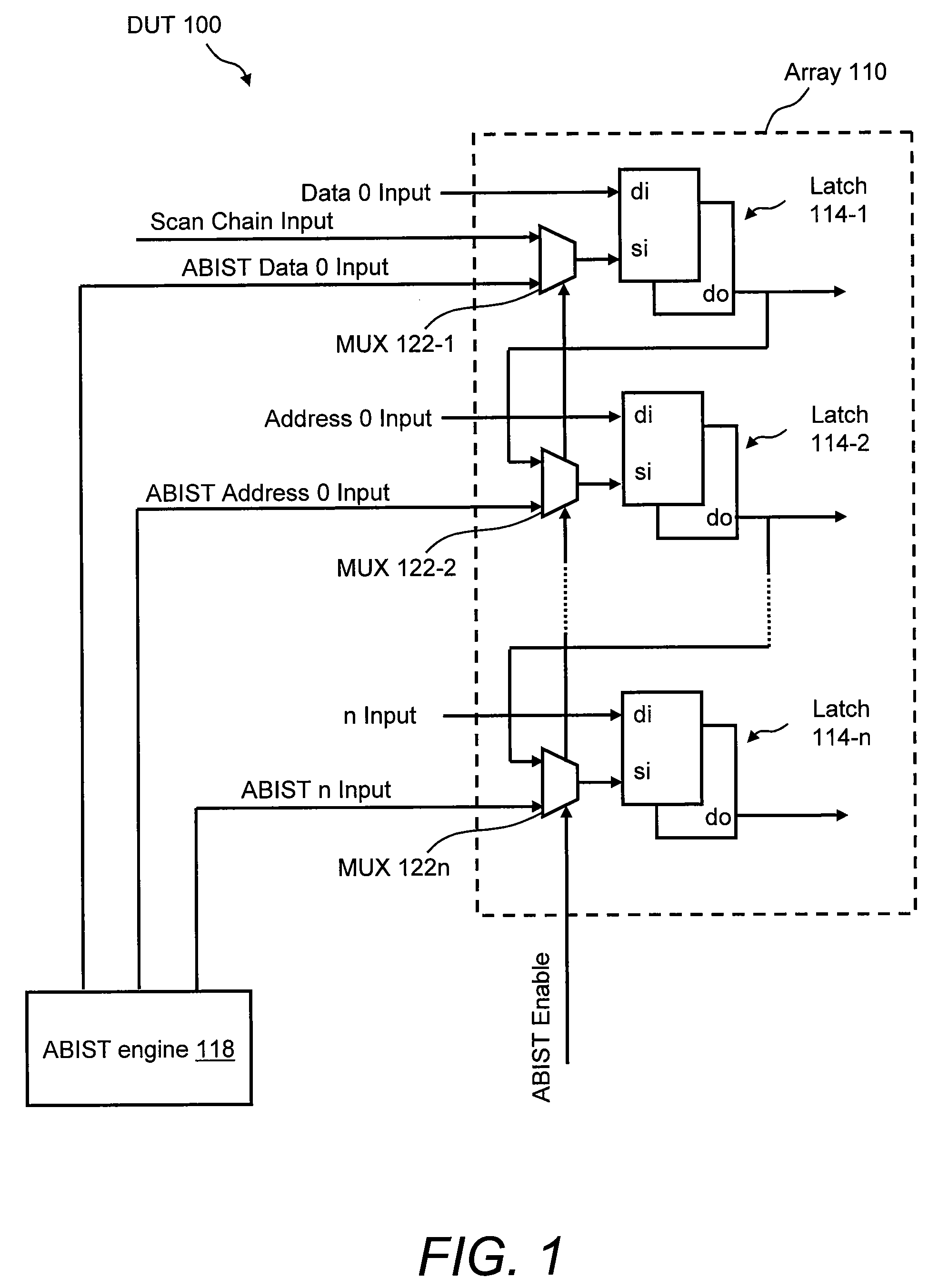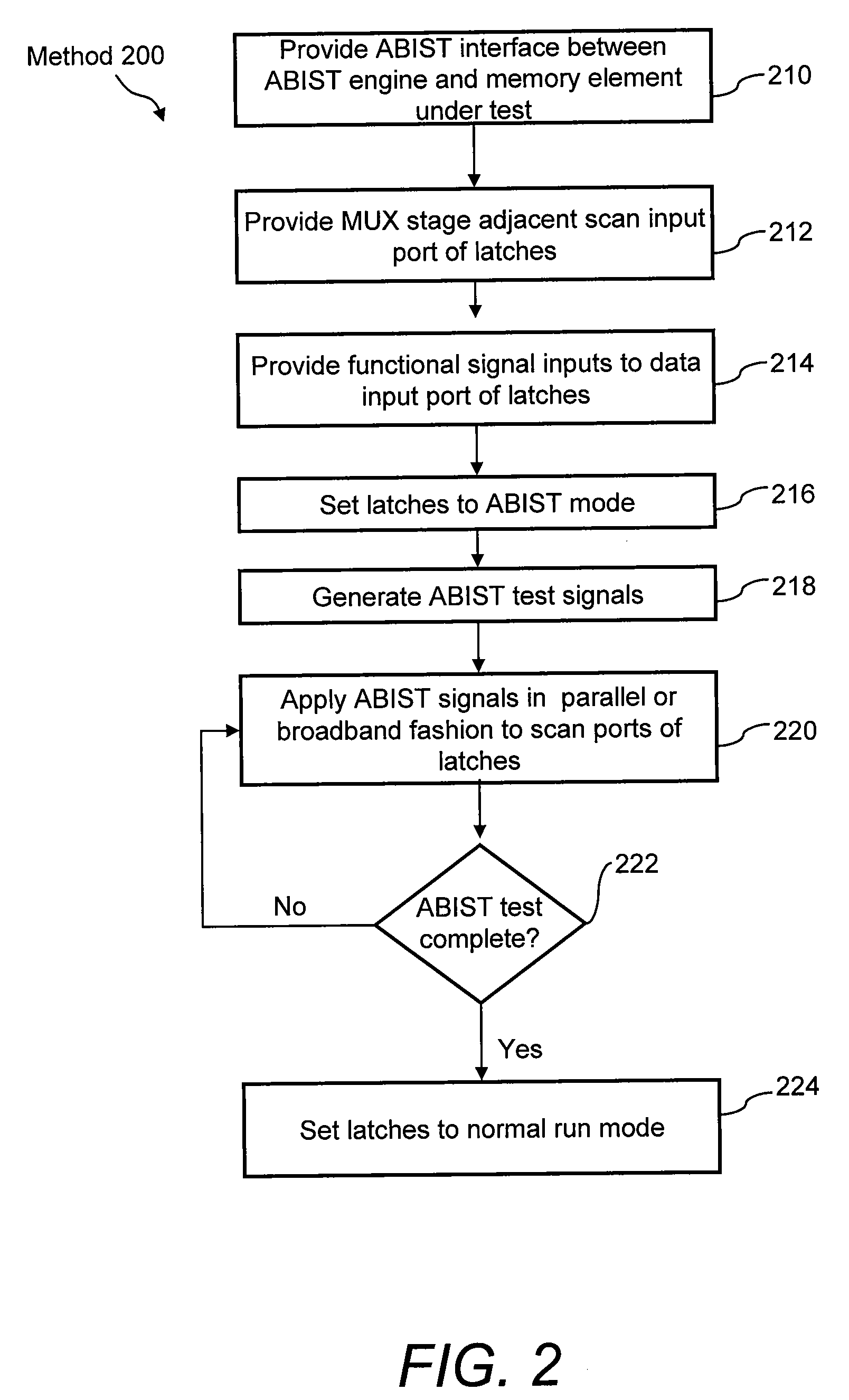Test interface for memory elements
a memory element and interface technology, applied in the field of integrated circuit testing, can solve the problems of excessive test time, insufficient mux stage, and specifically the corresponding propagation delay,
- Summary
- Abstract
- Description
- Claims
- Application Information
AI Technical Summary
Benefits of technology
Problems solved by technology
Method used
Image
Examples
Embodiment Construction
[0012]Generally speaking, the present invention includes an ABIST interface for testing memory elements of an integrated circuit and a corresponding method of creating and using the same. The ABIST interface of the invention may provide a mechanism to interface the ABIST engine to memory elements under test in a manner that does not impact chip performance, minimizes the amount of chip real estate that is needed, minimizes the amount of power consumption, and minimizes test time. In particular, the ABIST interface of the invention may provide a MUX stage at the scan input (i.e., scan port of the latch) of each individual cell of the memory element under test. In this way, the ABIST signals may be applied in a parallel fashion without impacting the performance of the memory element when in the functional mode of operation. Additionally, the ABIST interface of the invention may allow a full set of test patterns to be applied every clock cycle, which may provide maximum flexibility for...
PUM
 Login to View More
Login to View More Abstract
Description
Claims
Application Information
 Login to View More
Login to View More - R&D
- Intellectual Property
- Life Sciences
- Materials
- Tech Scout
- Unparalleled Data Quality
- Higher Quality Content
- 60% Fewer Hallucinations
Browse by: Latest US Patents, China's latest patents, Technical Efficacy Thesaurus, Application Domain, Technology Topic, Popular Technical Reports.
© 2025 PatSnap. All rights reserved.Legal|Privacy policy|Modern Slavery Act Transparency Statement|Sitemap|About US| Contact US: help@patsnap.com



